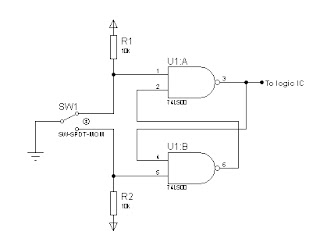Digital clock never get obsolete on digital electronic projects.
Many approach and design are available online but implementing it using 7490 decade counter is one of the easiest design. This can be proven by looking at its simplicity and compactness.
Check its datasheet to see it's pin configuration and how it's being implemented.
On our digital clock circuit. We will use divide-by 10, divide-by 6 and divide-by 2. This circuit design is not adjustable so you need to start the clock exactly 00:00 or 12am.
here's the circuit of 7490 to be used:
for SECONDS' ones, MINUTES' ones and HOURS' ones are divide by 10.
for SECONDS' tens and MINUTES' tens are divide by 6.
for HOURS' ones is divide by 2.
please refer to the diagram below for the appropriate circuit.
The output of the HOURS' tens digit is connected to an AND gate that will reset the counter to 00 when 12 is counted.
The clock source will depend on the designer. It can be a 60hz from the powerline, 555 astable mode, crystal oscillator or any oscillators.
here's the circuit:









